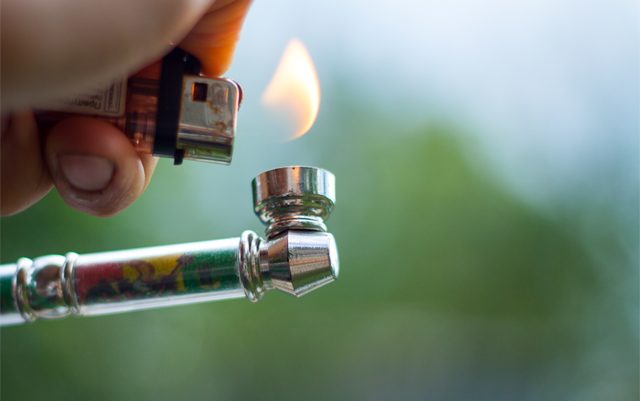The high associated with cannabis consumption can take on many forms – and while much of it will depend on which strain is used, there is still a lot you can do to control how your experience turns out. For example, edibles offer an almost entirely different experience compared to smoking, and vaporizing and smoking aren’t even as alike as you might imagine.
In order to understand how you can customize your cannabis consumption experience, you need to take a quick look at some of the different cannabinoids in the plant – each of which offers a different effect. From there, we will take a look at how varying temperatures will activate the different cannabinoids and how we can use that knowledge to our advantage in order to further customize the medicating experience.
Which Cannabinoids Produce Which Effects
Knowing that there are at least 85 different cannabinoids within the cannabis plant, it is amazing that we’ve even been able to narrow down the specific effects. The most well-known cannabinoid, tetrahydrocannabinol (or THC, as it is more commonly known), was first discovered by a scientist from Israel in 1964. Without this discovery, we may not have found the endocannabinoid system, which is responsible for our body’s reactions to cannabinoids and is thought to help maintain homeostasis.
THC is the cannabinoid that is responsible for most of the psychoactive effects we experience when we consume cannabis. THC causes the “head buzz” associated with marijuana use – things like the ability to focus, energetic and euphoric feelings, as well as the paranoia that can be experienced by some. Sativa strains are often higher in THC, giving them the upbeat and heady effects that make for great daytime use. They often display effects directly related to THC, like the ones just described.
CBD, on the other hand, is a non-psychoactive cannabinoid that offers the “body high” you experience when using cannabis. It has anti-inflammatory properties, and can lessen anxiety. Indica strains are often higher in CBD than most sativa strains, with a slightly lower THC content, which offers the more sedated, calming and relaxed body and head stoned experience. While they can both be effective individually, THC and CBD appear to work best when paired together.
Other cannabinoids that we know less about include:
- CBN – the aftermath of THC, known to cause fatigue
- THCA – before you get THC, you have THCA which is non-psychoactive; when you smoke or vaporize it, it becomes THC
- THCV – while very similar to THC, it is released at a higher temperature and causes psychoactive effects such as euphoria
Why Temperature Makes a Difference
You may be surprised – especially if you’ve never vaporized cannabis before – at just how much of a difference a change in temperature will make for your cannabis consumption experience. Each of the above mentioned cannabinoids – as well as many other compounds in cannabis such as terpenes, which affect the colors, aromas and flavors of the cannabis – will boil at a different temperature. By vaporizing at a lower or higher temperature, you can control which of the cannabinoids you are releasing when you consume.
Some cannabinoids are very sensitive to heat and will boil at 290-300 degrees fahrenheit. However, others, like THCV for example, will need a much higher temperature in order to reach its “boiling point”. The boiling point is basically the point at which you have to heat the cannabis in order to release that specific cannabinoid. Once you learn which cannabinoids are affected by what temperature, you will gain far more control over each experience.
Terpenes, when compared to certain cannabinoids, have a much higher boiling point – meaning at lower temperatures, you will not get as much full flavor or aroma. However, this can be a good thing if you’re trying to be discrete while you’re out and about. If you are looking for a fuller flavor, then you might just not have the heat turned up quite enough.
What Temperature Should You Be Vaporizing At?
Controlling your experience starts with knowing at which point different cannabinoids will become activated, allowing you to reap all the medicinal benefits with each puff off your vaporizer. THC, for example, has a rather low boiling point and will be released when it reaches 315 degrees fahrenheit. CBD, on the other hand, is not going to reach its boiling point until at least 356 degrees fahrenheit. Since CBD can counteract and balance THC, the introduction of cannabidiol changes the entire experience. It will slow things down, cause more euphoria and allow you to keep your focus without the racing energy. Temperatures around 330-370 degrees fahrenheit tend to offer the best balance of THC and CBD.
Anyone who uses cannabis for medicinal purposes should be aware of how vaporizing at different heats can affect the outcome of consumption. This can go a long way when it comes to medicating properly, generating the effects that you most desire without having any overly powerful ones (unless, of course, that’s what you’re looking for). Pairing the right strain with just the right heat will offer you the ultimate medicating experience – giving you more control over your cannabis than you probably ever thought you had.






